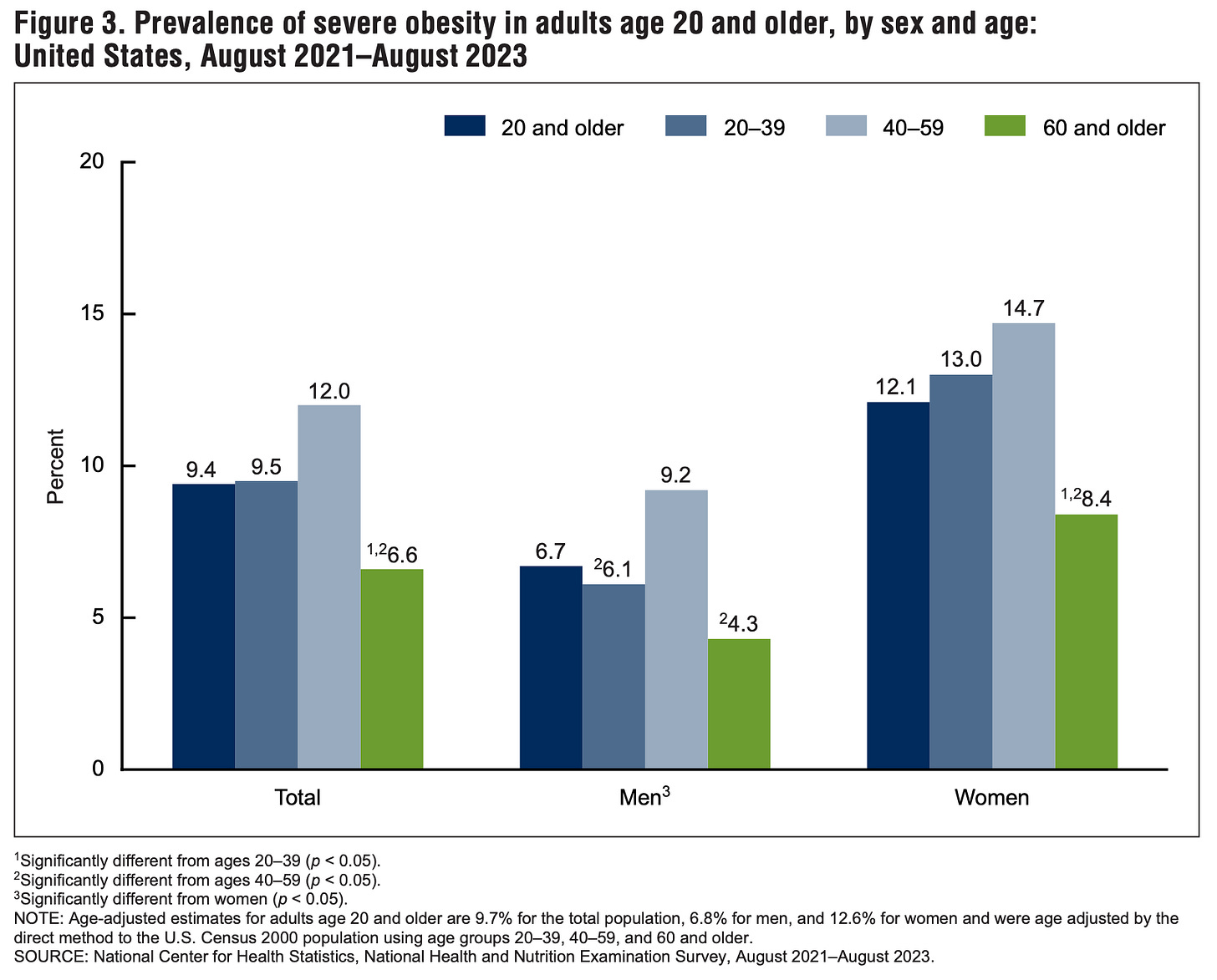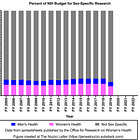This week’s graph, courtesy of a report published by the National Center for Health Statistics, illustrates the prevalence of adult obesity in the United States (U.S.) between 2021 and 2023.
Obesity1
• Approximately 40% of the U.S. population is obese.
• Obesity levels are greatest among adults aged 40-59 years old (46%).
• Obesity levels are similar in men (39%) and women (41%).
Severe obesity2
• Approximately 9% of the U.S. population is severely obese.
• Severe obesity levels are greatest among adults aged 40-59 years old (12%).
• Severe obesity levels are greater in women (12%) than men (7%).
Education and obesity
• Obesity levels are greater among individuals who have not earned a university degree (45%) compared to individuals who have earned a university degree (32%).
• This relationship between education and obesity is true for both men and women.
Source: Emmerich SD, Fryar CD, Stierman B, Ogden CL. Obesity and severe obesity prevalence in adults: United States, August 2021–August 2023. NCHS Data Brief, no 508. Hyattsville, MD: National Center for Health Statistics. 2024.
Bonus Commentary
Overweight and obesity correlate with increased health risk and increased economic costs to society as a result of those health risks. Maintaining a healthy body weight ought to be a central goal of any health and fitness program. Significantly reducing caloric intake and staying physically active can help to lose weight. The “fat positivity” and “fat activism” movements are problematic because they do not acknowledge the health risks and costs associated with overweight and obesity.
Related Content at The Nuzzo Letter
SUPPORT THE NUZZO LETTER
If you appreciated this content, please consider supporting The Nuzzo Letter with a one-time or recurring donation. Your support is greatly appreciated. It helps me to continue to work on independent research projects and fight for my evidence-based discourse. To donate, click the DonorBox logo. In two simple steps, you can donate using ApplePay, PayPal, or another service. Thank you!
Obesity, which refers to excessive body fat that increases health risk, is measured here by the body mass index (BMI). The body mass index is computed as one’s weight in kilograms divided by one’s height in meters squared. The body mass index is an imperfect measure of obesity because it does not measure body composition. Thus, BMI has limited clinical utility as a diagnostic tool for obesity in the individual patient. Nevertheless, at a population level, BMI correlates with body fat and numerous health outcomes. Thus, BMI has utility in epidemiological research.
Severe obesity is defined as a BMI ≥ 40 kg/m2.










